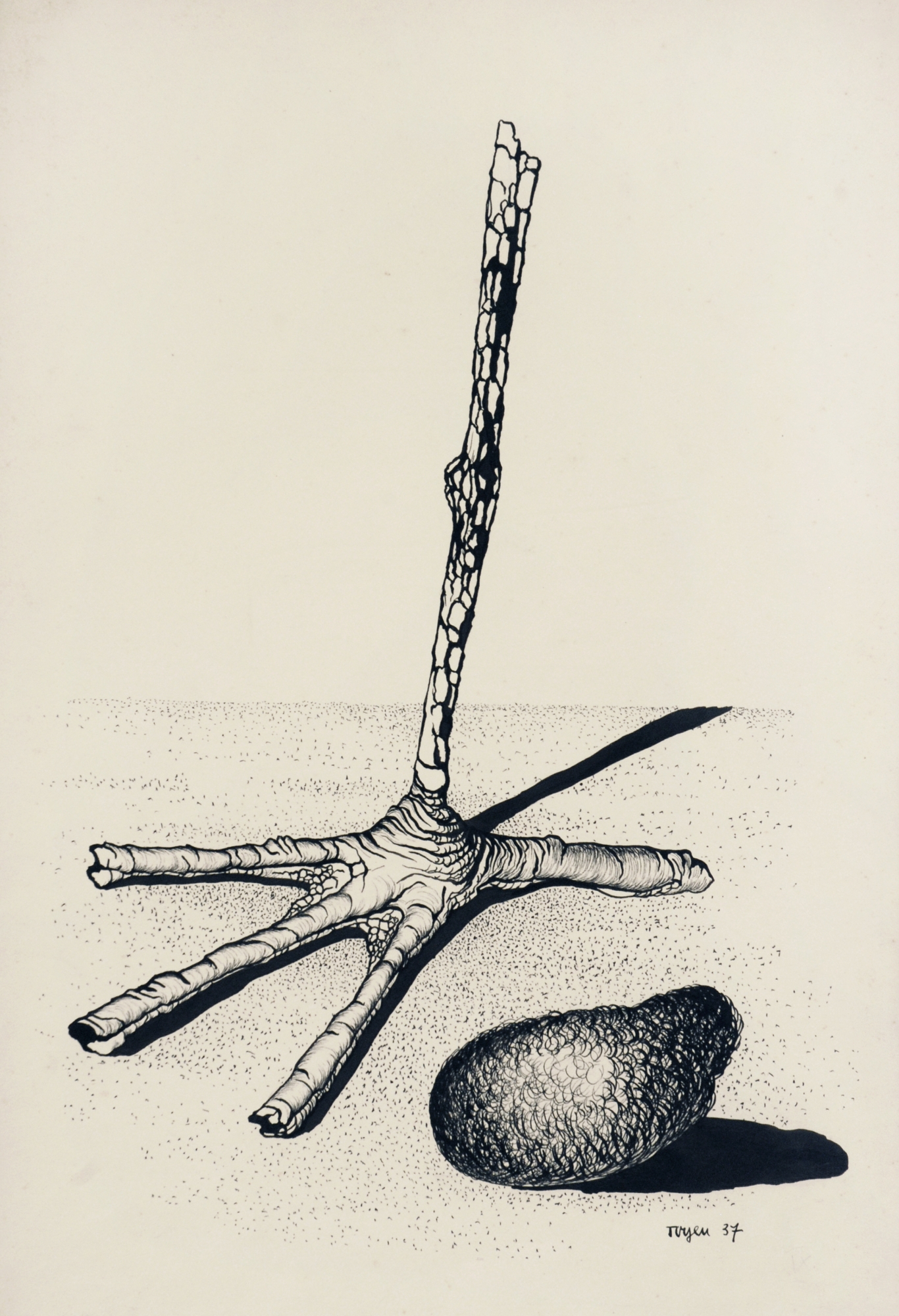TOYEN's drawing from this series, owned by OGV, and which is the work of the month of April, was most likely exhibited together with other works by the author at the second exhibition of the Surrealist Group in Czechoslovakia in 1938. The exhibition itself took place in a very complicated time and became an opportunity to criticize fascism and Stalinism, as recalled by Karel Srp in the monograph TOYEN, published in 2000. A number of theoreticians of the time commented on the traveling exhibition: Roman Jakobson, Jiří Kroha or Jan Mukařovský. In the introduction to the catalog for the exhibition, Karel Teige indicated the contradiction between avant-garde creations and official ideologies and drew attention to the analogy between the term "degenerate art" and "monstrous formalism" as a pejorative designation for avant-garde trends in Germany and the Soviet Union.
Even without a closer knowledge of the historical circumstances, the urgency, aggression, oppression, that an outstretched claw with a diagonally placed shadow seems to symbolize, can be sensed from the drawing. A soft zoomorphic tuft lies right within reach of the individual claws, defenselessly waiting to be grabbed. The light source lies to the left and in front, spatially outside the drawing, as if suggesting where the aggression will come from. Personally, I can't resist an analogy with the map of pre-war Czechoslovakia and the impending reduction of the Sudetenland. This may be my own projection, as I am observing the drawing from the perspective of a person who knows what happened next. Within the framework of TOYEN's work, these are not isolated subjects, motifs of claws appear repeatedly in her work and can have different meanings. For comparison, let's cite, for example, the illustrations for Anička skřítek a Slaměný Hubert from 1934, when the claw is used in direct connection with the text of the book. This grasping in both cases, both in this drawing and in Anička Skřítek, can be understood as usurping. In the iconography of the imaginary bestiary of TOYEN, the dead roosters with claws turned to the sky in one of the drawings of the later series Shooting range from 1939, where the anti-war orientation is expressed absolutely explicitly, have a similarly aggressive or anxious undertone. Similarly, various types of cocoons and featherbeds, motifs that have been recurring in the author's work since 1934, have a connection with night, anxiety, oppression - whether psychological, i.e. internal, or, as here, political - and external.
TOYEN (1902 Prague – 1980 Paris)
Civil name Marie Čermínová. Referred to as one of the most significant and free creative personalities of the artistic avant-garde of the first half of the 20th century. Together with Jindřich Štýrský, they created the art direction artificialism, based on poeticism (1927), from 1934 TOYEN called herself a surrealist. She was friends with the intellectual and artistic elite of her time, remained true to her inner need to create as a painter and did not submit her work to the demands of gallerists and art critics. She saw exhibitions as a manifestation of her friendship with surrealist poets, her friendship with André Breton and Jindřich Heisler is well known. TOYEN's life and work have contributed greatly to the history of feminist art and art criticism, but TOYEN has never openly expressed her sympathy or support for feminism.
Lucie Nováčková
